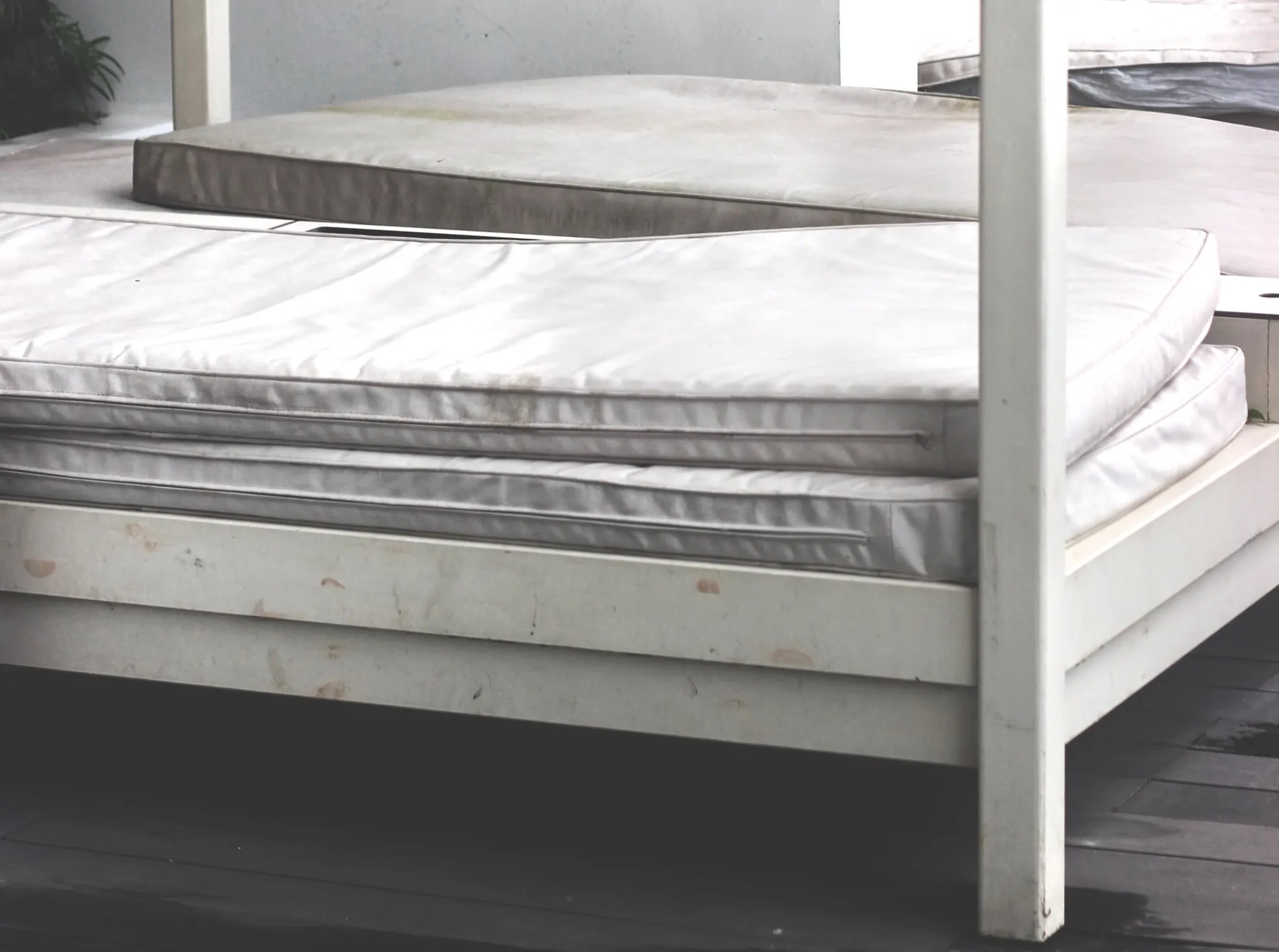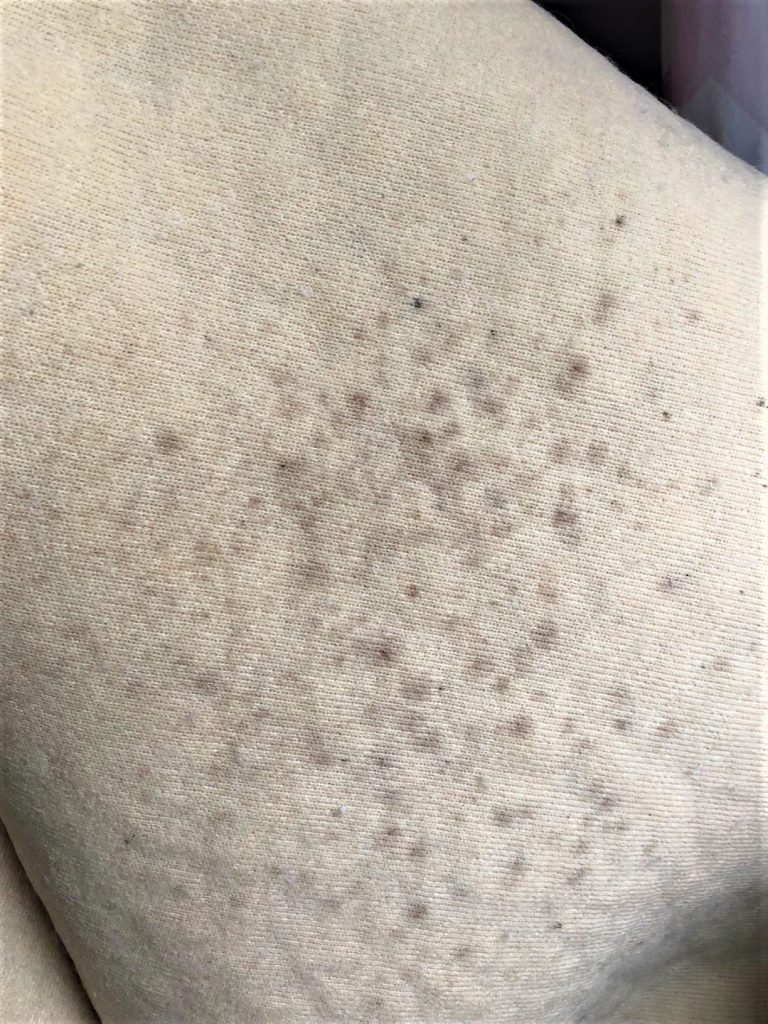The bottom of your mattress may be wet due to moisture build-up or spills. Condensation or plumbing leaks could also be culprits.
Discovering moisture at the bottom of your mattress can be concerning. This dampness often points to issues like humidity, accidental liquid spills, or issues with the bed frame or base that prevent proper ventilation. Sometimes, underlying conditions like a leak in the room, or even the rare circumstance of a mattress defect, may be at fault.
Properly maintaining your mattress by using protective covers and ensuring a well-ventilated space can mitigate such problems. Recognizing the cause quickly not only protects your investment but also ensures a healthy, mold-free sleep environment. It’s essential to pinpoint the source of wetness promptly to avoid any long-term damage to your mattress or potential health risks associated with mold and mildew growth.
Introduction: Uncovering The Mystery Of A Wet Mattress
Finding the bottom of your mattress wet can be puzzling. Dampness where you sleep spells trouble. It affects comfort, hygiene, and the lifespan of your mattress. In this post, we uncover why a mattress may end up wet on the bottom and the importance of keeping it dry.
Understanding The Significance Of A Dry Sleep Environment
A dry mattress is crucial for sleep quality and health. Mildew and mold thrive in moisture and can lead to allergies or respiratory issues. A dry sleep environment also maintains the structural integrity of your mattress, ensuring long-lasting comfort and support.
Initial Observations And Common Concerns
When the underside of a mattress is wet, take note of the following:
- Environmental factors: High humidity, spills, or accidents could be culprits.
- Signs on the mattress: Stains, odors, or mildew indicate moisture problems.
- Physical discomfort: Increased instances of allergies or difficulty sleeping could be related to wetness.

Credit: johnryanbydesign.co.uk
Common Causes Of Mattress Moisture
Discovering a wet mattress can be an unpleasant surprise. The cause of mattress moisture can vary from accidental spills to environmental factors. Understanding the origins of this dampness is essential in protecting your mattress investment and ensuring a healthy sleep environment. Let’s explore some common culprits behind a wet mattress.
Environmental Humidity And Its Effects On Mattresses
High levels of humidity can lead to mattress wetness. Without proper ventilation, moisture from the air can settle into the fibers of your mattress. Signs include a musty smell or feeling damp to the touch. To combat this, consider a dehumidifier or increase air circulation in your sleeping area.
Spills And Accidents: From Beverages To Night Sweats
- Drink spills during breakfast in bed can soak into your mattress, creating a moist environment.
- Night sweats or accidents by children are natural occurrences that can result in mattress moisture.
- Using moisture-resistant covers or protective sheets can help keep your mattress dry.
Plumbing Leaks And Water Damage
Mattresses near bathrooms or below water pipes are susceptible to water damage. Leaks from plumbing fixtures can seep unnoticed until the mattress is wet. Regular inspections of surrounding areas can prevent such unforeseen mattress disasters. If you suspect a leak, address it immediately to avoid irreversible damage to your mattress.
The Health Implications Of A Wet Mattress
Discovering a wet bottom on your mattress raises immediate concerns, not only for the comfort and longevity of your mattress but also for your health. A moist environment within your bedroom sanctuary can breed numerous health risks. It’s vital to understand these risks and learn how to address them.
Mold And Mildew: Risks And Prevention
Mold and mildew growth in mattresses can lead to serious health issues, including respiratory problems, allergies, and infections. Dark, damp areas are perfect for these harmful organisms. Ensure good air circulation, use dehumidifiers, and keep your mattress dry to prevent their spread.
- Use protective covers to shield your mattress from moisture.
- Clean spills immediately to avoid dampness.
- Air out your mattress regularly in sunlight to reduce humidity.
Dust Mites And Allergens Thriving In Damp Conditions
Dust mites and allergens love wet environments. They lead to sneezing, itching, and discomfort. Keep your bedroom dry and cool to discourage mite populations from flourishing. Regular cleaning and vacuuming of your mattress can also help keep allergens at bay.
| Strategy | Benefit |
|---|---|
| Use allergen-proof covers | Creates a barrier against mites |
| Wash bedding in hot water weekly | Kills mites and removes allergens |
The Impact Of Dampness On Sleep Quality And Health
A wet mattress can severely deteriorate sleep quality. Humidity affects body temperature regulation, disrupting sleep patterns. This can weaken immune systems and affect overall well-being. Strategies for maintaining a dry, comfortable sleep environment are necessary for good health.
- Invest in a good quality dehumidifier.
- Keep room temperatures consistent.
- Use breathable, moisture-wicking bed linens.

Credit: www.reddit.com
Preventive Measures To Keep Your Mattress Dry
Waking up to find the bottom of a mattress wet is concerning. Keeping a mattress dry is crucial for comfort and health. This article outlines practical steps to safeguard the mattress against unwanted moisture. Follow these preventive tips to ensure a cozy and dry sleeping environment.
Protective Covers: Types And Benefits
Protective mattress covers shield against spills, stains, and dampness. They extend the life of the mattress. Here are the cover types:
- Encasement Covers: Wrap the mattress completely, providing 360-degree protection.
- Fitted Covers: Similar to a fitted sheet, they protect the top and sides.
- Pads and Toppers: Offer a layer of absorbency on the top surface.
Benefits include:
| Type | Benefit |
|---|---|
| Encasement Covers | Prevent dust mites, bed bugs, and allergens. |
| Fitted Covers | Easy to remove and wash, maintaining hygiene. |
| Pads and Toppers | Add comfort and absorb minor spills. |
Optimizing Bedroom Ventilation
Proper ventilation is key for a dry mattress. Here’s how to optimize airflow:
- Keep windows open during the day.
- Use fans or air purifiers to circulate air.
- Consider a dehumidifier to reduce room moisture.
Maintaining a balance between indoor air quality and humidity is essential. It prevents mattress dampness.
Regular Maintenance And Cleaning Practices
Consistent cleaning deters moisture buildup. Effective mattress maintenance includes:
- Vacuuming the mattress monthly to remove dirt and debris.
- Spot cleaning any spills immediately with a mild detergent.
- Flipping or rotating the mattress every three to six months.
This routine ensures a dry, fresh sleeping space. Spot cleaning helps prevent mold growth from spills.
Troubleshooting Wet Mattress Issues
Discovering wetness at the bottom of your mattress can be an alarming experience. Without prompt and proper action, moisture may lead to mold, mildew, and a host of respiratory issues. This guide will walk you through effective steps to troubleshoot wet mattress issues and ensure the longevity and hygiene of your bedding.
Assessing The Severity Of Mattress Wetness
Start by determining how much of the mattress is wet. Light dampness may just need airing out. A fully soaked mattress needs immediate attention.
- Check the extent of wetness.
- Identify the water source.
- Notice any odor or discoloration.
Use towels to absorb excess moisture and allow the mattress to air dry, preferably in sunlight if possible. Sunlight effectively kills bacteria and reduces odors.
When To Consider Professional Cleaning
Professional cleaning becomes necessary when:
- The wetness penetrates deep into the mattress.
- There is a persisting unpleasant smell.
- Mold or mildew presence is suspected.
Professionals use specialized equipment and techniques to thoroughly clean and disinfect the mattress, ensuring its safety for use.
Making The Decision: Repair Or Replace?
Consider the age and condition of your mattress, alongside the wetness issue. If the mattress is relatively new and the damage is minor, repair may be sufficient. However, if the mattress is old or extensively damaged, replacing it might be the wiser investment.
| Severity | Repair | Replace |
|---|---|---|
| Minor Wetness | Air Dry or Spot Clean | Not Necessary |
| Moderate Wetness | Professional Cleaning | Consider Based on Age |
| Severe Wetness | Difficult to Salvage | Recommended |
Prioritize your health and comfort when making the decision. A dry, clean mattress is essential for good sleep and overall wellness.
Mitigating Long-term Damage: Recovery Strategies For Your Mattress
Waking up to a wet mattress can be confusing and frustrating. Whether it’s due to spills, humidity, or an accidental leak, moisture can cause significant damage to your mattress if it’s not addressed quickly and effectively. In this section, we’ll explore practical strategies to recover your mattress and protect it from long-term damage.
Drying Techniques For A Wet Mattress
Quick action is crucial to save a wet mattress. Here are steps to dry it fast:
- Remove bedding: Strip all covers and sheets.
- Blot the wet area: Use towels to absorb excess moisture.
- Air it out: Place the mattress in a well-ventilated area or use fans to circulate air.
- Use a dehumidifier: This machine pulls moisture from the air and surrounding objects.
- Baking soda: Sprinkle it on the surface to help absorb moisture.
- Let it sun-dry: Sunlight can reduce dampness and prevent mold growth.
- Vacuum: After drying, vacuum any remaining baking soda.
Identifying And Addressing The Source Of Moisture
Detecting the cause of wetness stops further damage. Check these common sources:
- Leaks: Inspect the room for signs of water intrusion.
- Humidity: Use hygrometers to measure indoor humidity levels.
- Spills: If liquid causes wetness, avoid eating or drinking in bed.
- Sweat: Mattress protectors can help if sweating is an issue.
Long-term Solutions To Prevent Recurrence
Here are some strategies to ensure the issue doesn’t occur again:
| Solution | Benefit |
|---|---|
| Waterproof Mattress Cover | Shields mattress from spills and accidents. |
| Room Dehumidifier | Maintains optimal humidity, preventing mold. |
| Regular Inspections | Catches potential leaks before they worsen. |
Adopt these strategies to maintain your mattress’s integrity and comfort for years to come.
Conclusion: Ensuring A Dry, Safe, And Comfortable Sleeping Environment
The comfort and safety of your sleeping space hinge on a dry mattress. Addressing the issue of a wet mattress is crucial. This section summarizes the steps for maintaining a dry and healthy sleep environment.
Recap Of Key Strategies To Combat Mattress Wetness
Immediate action is the best defense against a wet mattress. A quick response prevents moisture from causing harm. Regular inspection helps in spotting early signs of dampness. Let’s review key strategies:
- Check for leaks: Inspect your room and mattress for potential water sources.
- Use mattress protectors: They safeguard against spills and accidents.
- Ensure proper ventilation: It aids in reducing moisture and prevents mold growth.
- Address spills immediately: Blot and clean any spills without delay.
The Importance Of Proactivity And Timely Responses
Preventive measures can minimize the risks of mattress wetness. This eliminates discomfort and unsanitary conditions.
- Respond quickly to wetness to avoid long-term damage to your mattress.
- Maintain cleanliness to ensure a fresh sleep environment.
- Regularly aerate your mattress to drive out trapped moisture.
By embracing these practices, a dry, safe, and comfortable sleep becomes achievable every night.

Credit: amerisleep.com
Frequently Asked Questions On Why Is The Bottom Of My Mattress Wet
Why Does The Underside Of My Mattress Get Wet?
The underside of your mattress may get wet due to inadequate air circulation, moisture buildup, or spills seeping through the bedframe. Ensure proper ventilation and use a mattress protector to prevent dampness.
How Do You Prevent Moisture Under A Mattress?
Use a breathable mattress protector to shield against moisture. Ensure good air circulation by regularly lifting the mattress. Opt for slatted bed frames for enhanced airflow. Keep humidity levels in your room low with a dehumidifier. Clean and dry your mattress periodically to prevent moisture buildup.
Why Is There Sweat On The Bottom Of My Mattress?
Sweat forms on the bottom of a mattress due to body heat and moisture trapped during sleep, resulting in condensation. Good ventilation can help reduce this.
How Do You Treat A Damp Mattress?
To treat a damp mattress, remove bedding and let it air dry, use a dehumidifier in the room, sprinkle baking soda on the surface, vacuum it up after a few hours, and then expose the mattress to sunlight. Always ensure the mattress is completely dry before use.
Conclusion
Discovering a wet mattress bottom can be unsettling. By now, it’s clear that multiple factors may lead to moisture issues beneath your bed. Regular inspections and prevention strategies are crucial. Tackle spills, humidity, and leaks promptly to safeguard your mattress.
Remember, a dry mattress equals a healthier sleep environment and peace of mind.

